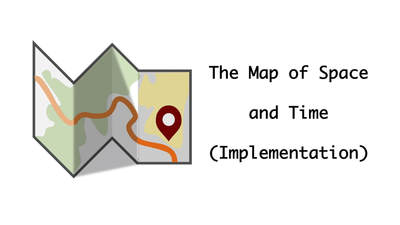|
In Part I, I put forth the idea of that the scientific theory of reading is like a map. Let’s call it The Map of Reading Theory. For teachers to get the ultimate destination point (X) - capable and happy readers, writers, and spellers - they must have the map in their possession and know how to read it. Most importantly, they must follow it! I also put forth the proposition that if reading, writing, and spelling success is going to be scaled to a point where the success is district-wide (beyond the individual classrooms of highly capable teachers), then it is necessary to follow other maps as well. I see these additional maps as: Map of Literacy Leadership. This map describes how literacy leaders gather into a team capable of solving literacy problems and promoting literacy solutions within a district or school. Its features are the general laws and facts found in theories of human interaction, leadership, and team-dynamics. I’d say it’s also based on the research and writing of people like Bruce Joyce, Beverly Showers, John Hattie, and others. Map of Plans and Programs This map describes the components of an effective literacy plan and guides the literacy leadership team as they construct it. Commander Chris Hatfield (NASA astronaut) says, “Space exploration demands that we have a short, one-page solution to any problem.” A literacy plan won’t be a one-page document. But it should be compact and to the point, describing what content, instructional methods, and literacy frameworks will be combined into a plan capable of producing strong readers, writers, and spellers. I see this map as being different from the others. It is not so much a narrative that describes the features of a scientific theory as it is a collection of information gathering documents (constructed by the team) that allow the team to map out a new literacy plan. However, what is included in this plan (via the documents) is absolutely grounded in the Map of Reading Theory This plan is a melding of various literacy programs and/or practices, such as a basal reading series with best practices from balanced literacy, or a guided reading program plus Kid Writing plus Spelling Connections, and so forth. The Map of Implementation I also call this The Map of Space and Time. This map describes how a literacy plan is implemented across classrooms and buildings (space) and over multiple years (time). For full implementation to occur, that is to say for the plan to get students to destination point X year after year, teacher and literacy leaders must partake in professional development and administrators must give enlightened oversight to the entire process. Like the Map of Leadership, this map features the general laws and facts found in the theories of leadership and team-dynamics. It is also based on research that describes the actions and behaviors of teachers and administrators that lead to effective and sustained literacy practices.
When maps are followed, the instructional capability and the content knowledge of teachers and administrators are deepened, and literacy programs are strengthened across a system, from classroom to grade level to school to district. In turn, more and more students become successful and happy readers, writers, and spellers. And that is the ultimate point of arrival. Comments are closed.
|
Mark WeaklandI am a teacher, literacy consultant, author, musician, nature lover, and life long learner.
|



 RSS Feed
RSS Feed